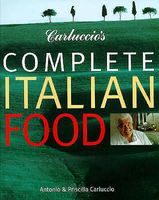Advertisement
Limone
Lemon
By Antonio Carluccio and Priscilla Carluccio
Published 1997
Originally from Asia, the lemon found its way to Europe via the Middle East and was probably introduced by the Arabs. Sicily produces 90 per cent of Italy’s lemons (650,000 tonnes per year), and the other ten per cent are grown in Calabria and Sardinia, with some of the best coming from the Amalfi coast in Campania. Lemon varieties have quite funny names, like Femminello, Femminello di Santa Teresa, Monachello and Interdonato. Lemons are well known for being rich in vitamin C and they are so acidic that their juice can corrode iron and be used as a disinfectant. In the kitchen, however, it is the ability of the lemon to flavour and to sour, as well as to prevent oxidation, that is most valued. Lemon juice is used to heighten the flavour of both sweet and savoury sauces and to establish a good balance between fat and acid. It is also used instead of vinegar to dress salads and is almost always squeezed over grilled, fried and boiled fish to bring out the flavour of the fish. It is an indispensable acid agent for curing raw foods such as meat tartares (see Carne all’Albese), and for marinating fish.



